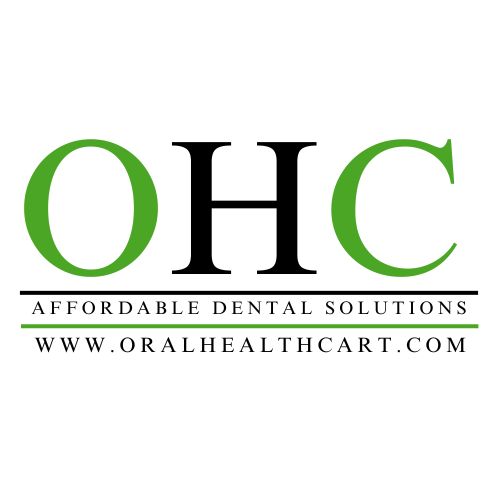A Guide To Oral Surgery Instruments For Beginners
The Dental Cart
.jpg)
A Guide To Oral Surgery Instruments For Beginners
Oral surgery is one of the most intricate and skill-demanding branches of dentistry, requiring not just precision and expertise but also the right set of instruments. Whether you’re a dental student or a new practitioner, understanding the basic oral surgery instruments and their applications is essential to ensure safe, efficient, and successful procedures. At Oral Health Cart, we believe that great results begin with great tools—and knowing how to use them correctly can make all the difference.
This guide will walk you through the fundamental oral surgery instruments for beginners, their purposes, and some essential tips for handling them effectively.
1. Understanding the Importance of Oral Surgery Instruments
Every instrument in oral surgery has a specific function—cutting, grasping, retracting, or elevating tissues and teeth. Using the right tool not only enhances surgical precision but also minimizes trauma to surrounding tissues, leading to faster recovery and better patient outcomes.
Beginners often underestimate the role of high-quality instruments, but the truth is, superior tools improve tactile feedback, comfort, and control—key factors in developing surgical confidence. That’s why Oral Health Cart provides only precision-engineered instruments that meet international dental standards.
2. Basic Categories of Oral Surgery Instruments
Oral surgery instruments are typically grouped according to their primary function. Let’s explore the main categories every beginner should know.
A. Examination Instruments
Before beginning any surgical procedure, proper diagnosis and visualization are crucial.
-
Mouth Mirror: Helps reflect light and provide indirect vision, especially in hard-to-see areas.
-
Explorer/Probe: Used to detect caries, calculus, and assess root surfaces.
-
Cotton Pliers: Aid in handling gauze, cotton pellets, or other small items during examination or surgery.
These may seem simple, but they lay the foundation for every successful oral surgical procedure.
B. Elevation and Extraction Instruments
Tooth extraction is one of the most common oral surgical procedures. Understanding elevators and forceps is essential for every beginner.
Dental Elevators: These are used to loosen teeth from their sockets before extraction. There are different types, such as:
-
Straight Elevators: Used to apply leverage and detach the periodontal ligament.
-
Periosteal Elevators: Help lift soft tissue flaps during surgical exposure.
-
Cryer Elevators: Designed for removing broken roots or impacted teeth.
Extraction Forceps: Once loosened, forceps are used to grasp and remove the tooth. Each set is designed for specific teeth (upper, lower, anterior, or molars).
Proper knowledge of how to handle elevators and forceps safely prevents fractures and reduces tissue trauma.
C. Surgical Cutting Instruments
These are essential for incisions and tissue removal during surgery.
-
Scalpels and Blades: The most common combination is a Bard-Parker handle with a No. 15 blade, ideal for precise incisions.
-
Surgical Scissors: Available in various shapes (curved or straight) for trimming soft tissues or sutures.
-
Bone Chisels and Rongeurs: Used to cut or reshape bone during oral surgical procedures, especially in impactions or apicoectomies.
Cutting instruments should always be sharp and well-maintained to ensure clean incisions and minimal trauma.
D. Tissue Handling and Retracting Instruments
Maintaining a clear surgical field is vital during oral procedures.
-
Tissue Forceps: Such as Adson or Allis forceps, used to grasp soft tissues without causing damage.
-
Mouth Gags and Retractors: Keep the mouth open and retract cheeks or lips for better visibility. Common examples include Minnesota retractors and Cheek retractors.
These instruments are key for ensuring comfort, access, and efficiency during operations.
E. Hemostatic and Suturing Instruments
Controlling bleeding and closing incisions properly are crucial aspects of surgery.
-
Hemostats (Artery Forceps): Used to clamp blood vessels and control bleeding.
-
Needle Holder: Holds the suture needle securely during stitching.
-
Surgical Needles and Sutures: Available in absorbable or non-absorbable types, depending on the procedure.
Mastering these instruments ensures proper wound healing and minimizes postoperative complications.
F. Bone Instruments
When dealing with bone-related procedures such as extractions of impacted teeth or implant placements, bone instruments are indispensable.
-
Bone Files: Used for smoothing bone edges after extraction.
-
Rongeurs: Heavy-duty instruments for trimming or removing bone.
-
Mallet and Chisel: Used together to remove bone during surgical access.
Beginners must use these instruments gently and with proper technique to avoid unnecessary bone trauma.
3. Tips for Beginners When Handling Oral Surgery Instruments
Learning how to handle surgical instruments effectively is as important as knowing what they do. Here are a few expert tips:
-
Always maintain sterilization: Contaminated instruments can lead to infections. Follow strict sterilization protocols before and after each use.
-
Understand the anatomy: Knowledge of oral and maxillofacial anatomy helps in choosing and positioning the right instruments.
-
Maintain sharpness: Blunt blades or dull elevators can cause tearing and unnecessary force application.
-
Grip properly: Use a stable, ergonomic grip to enhance control and minimize hand fatigue.
-
Organize your tray: Keep instruments arranged in order of their use—this improves efficiency and reduces stress during surgery.
At Oral Health Cart, we offer detailed instrument sets categorized by procedure type, making it easier for beginners to organize and learn.
4. Importance of Using High-Quality Instruments
Beginners often make the mistake of purchasing low-cost or non-certified instruments, only to realize they wear out quickly or perform poorly. Investing in certified, medical-grade stainless steel instruments ensures durability, precision, and easy sterilization.
At Oral Health Cart, every product undergoes stringent quality checks to guarantee smooth performance and longevity. We supply a full range of oral surgery instruments—from basic examination tools to specialized surgical sets—tailored for both students and professionals.
5. Building Confidence with the Right Tools
Using the right instruments builds a beginner’s confidence and improves clinical outcomes. As your experience grows, you’ll naturally develop preferences for specific handle designs, weights, and blade types. The key is to start with reliable, well-balanced, ergonomic tools that allow you to focus on technique rather than struggle with the equipment.
Oral surgery may seem daunting at first, but with the right training, mindset, and tools, every beginner can develop surgical proficiency and precision. From elevators and scalpels to retractors and suturing tools, understanding the purpose and handling of each instrument is fundamental to achieving success in this field.
At Oral Health Cart, we’re committed to supporting dental professionals at every stage of their journey. Our range of high-quality oral surgery instruments is designed for comfort, precision, and performance—helping beginners and experts alike deliver the best in patient care.
Categories: Prostho Instruments


 Oralhealthcart Products
Oralhealthcart Products

